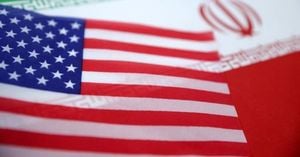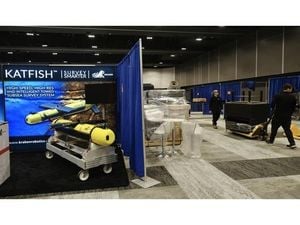This study examines how the combination of laser surface texturing and micro-arc oxidation can significantly improve the tribological properties of TC4 titanium alloys.
Released on March 22, 2025, this research presents groundbreaking advances in the treatment of titanium alloys, particularly through enhancing their wear resistance—a critical factor for various industrial applications.
Titanium alloys, specifically TC4 (Ti-6Al-4V), possess numerous benefits due to their lightweight and high strength. However, these materials face performance limitations because of low surface hardness and unfavorable friction coefficients. Such deficiencies curtail their usability in demanding settings, particularly where wear resistance is paramount.
To tackle these issues, scientists employed a novel approach entailing laser surface texturing (LST) followed by micro-arc oxidation (MAO). This dual-process aims to improve the bonding between coatings and the substrate while enhancing tribological performance. The findings indicate substantial enhancements in surface properties, with the micro-arc oxidation coatings consisting predominantly of Rutile and Anatase phases of titanium dioxide.
The study showcased the robust methods used in evaluating the effectiveness of the treatments. Researchers measured micro-hardness, friction coefficients, and adhesion strength through a series of experiments using advanced techniques such as X-ray diffraction, field emission scanning electron microscopy, and standardized testing for mechanical properties.
Results from the experimental setup demonstrated impressive improvements: MAO coatings achieved a thickness of 23.82 μm and a maximum hardness of 467.56 HV₀.₅. Furthermore, the friction coefficient of the laser-textured coatings dropped to approximately 0.3, demonstrating up to 44.4% improvement from previous iterations. These results showcase both the versatility and effectiveness of the combined treatment method.
According to the authors, "The integration of laser surface texturing significantly enhances the adhesion strength between the coating and substrate while simultaneously improving the tribological performance." This emphasizes the crucial role that surface engineering plays in extending the lifecycle of titanium alloys in demanding environments.
The study not only addresses existing limitations but opens pathways for future exploration in the field of industrial material coatings. Researchers conducted their study meticulously, employing a step-by-step method to detail the preparation of the TC4 alloy substrate, the parameters of both the LST and MAO processes, and the chemical composition of the mixed electrolyte used for oxidation.
Using a 355 nm UV laser, the team carefully textured the titanium surface before the oxidation process. The well-defined patterns—circular ring texture (LST1) and rectangular ring texture (LST2)—yielded promising results. Each texture was designed with unique dimensions to optimize bonding and performance based on varying surface microtopography.
Post-treatment analyses revealed that the MAO coatings not only exhibited enhanced tribological characteristics but also maintained integrity and coherence during scratching tests. The findings illuminated the wear mechanisms involved, distinguishing between spalling and abrasive wear characteristic of the processed coatings.
A detailed examination of the wear mechanisms provided insight into the reasons behind the improved performance of the textured coatings over the untextured MAO coatings.
In conclusion, the findings from this study substantiate its importance in enhancing titanium alloy usability across a range of applications. As the authors note, "Our findings establish a clear correlation between enhanced surface structuring and improved coating durability in practical applications," highlighting the pivotal place of such research in advancing material science.
The research not only contributes valuable knowledge to the field but also has extensive implications for industries reliant on titanium alloys, reaffirming the necessity for ongoing innovation in material treatments.




